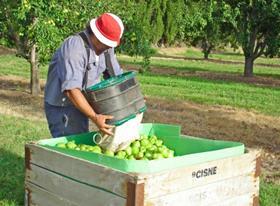
Argentina's topfruit production is expected to fall through calendar year (CY) 2018, although exports of both apples and pears are forecast to increase.
That is the verdict of a new US Department of Agriculture (USDA) GAIN report, released at the end of May, which also projected lower domestic consumption of apples and pears due to a lack of availability.
The study suggested production of fresh apples will fall from 550,000 tonnes to 530,000 tonnes, while pear volumes will drop to
600,000 tonnes to 530,000 tonnes.
'Calendar year 2018 is expected to be a 'lighter' season for apples as the trees lifecycle recovers from a heavy blossom season in CY2017,' USDA outlined. 'In addition, economic struggles have reduced planted area and prevented producers from keeping orchards in good condition, and this along with hail during the production season, have reduced production potential for both fruits.'
Argentina exports topfruit to about 60 markets, with the EU overtaking Brazil as the most important export market for apples last year, although Brazil remains top of the tree for pears.
For CY 2018, fresh apple and pear exports are projected to increase slightly. For apples, they will increase from 80,000 tonnes to 90,000 tonnes, the USDa reported, while pear exports will grow from 280,000 tonnes to 290,000 tonnes.
'Nevertheless, exports for both fruits are forecast below historical levels as Argentina’s falling competitiveness provides market opportunities for strong Southern Hemisphere competitors, such as Chile, New Zealand and South Africa, in its traditional export markets,' the group added.



